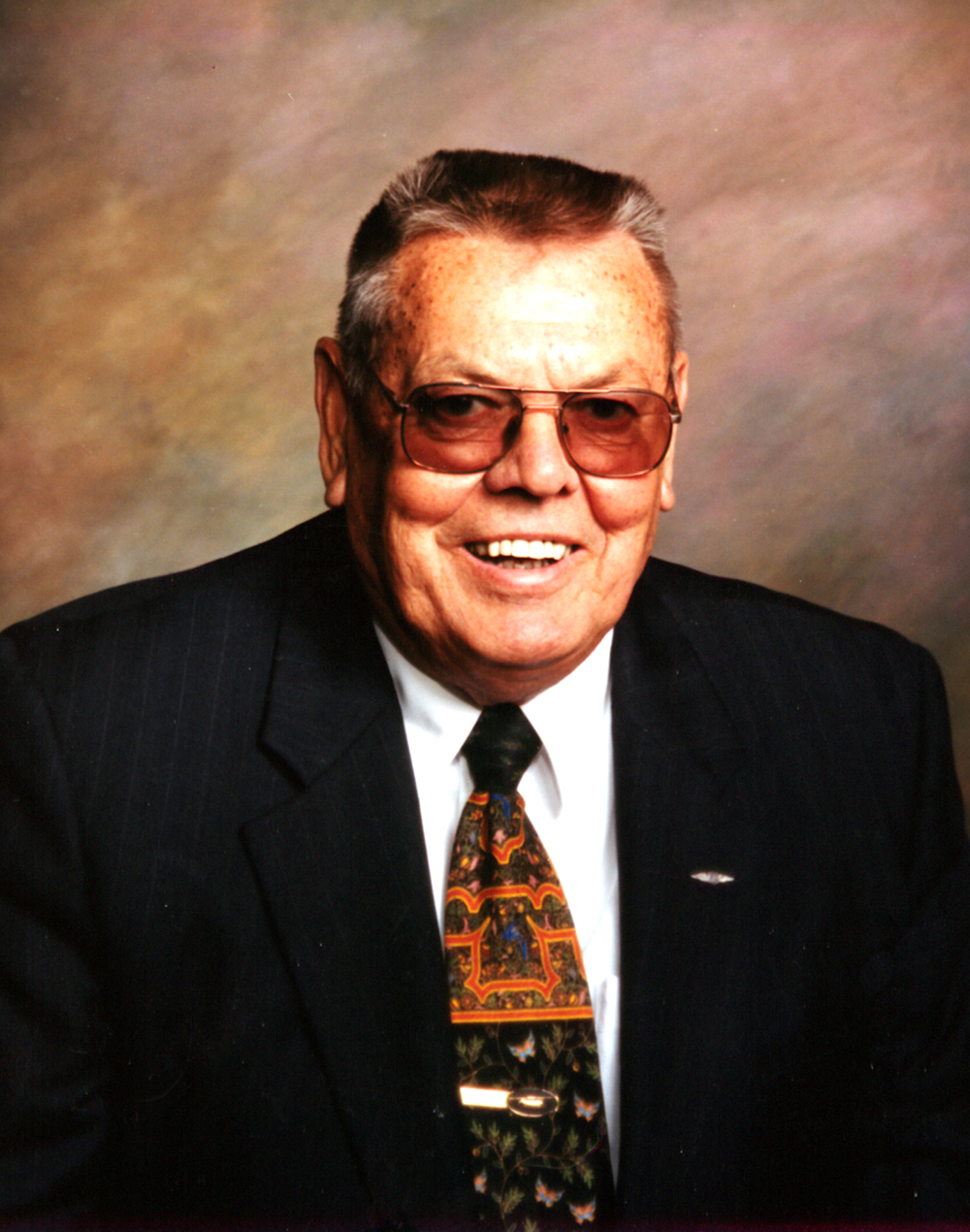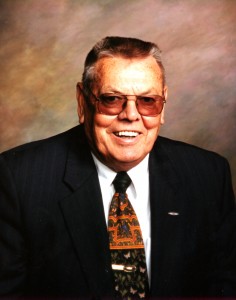
Wes Lematta founded Columbia Helicopters in Oregon 50 years ago. He still visits the business regularly and participates in decisions on the company’s growth.
By Terry Stephens
Wes Lematta always dreamed big, even in 1987, when his new business had only one helicopter. Over the next 50 years, his dream grew bigger than even he had ever imagined; he became the world’s largest civilian operator of heavy-lift whirlybirds.
Columbia Helicopters, based at Oregon’s Aurora State Airport (UAO), began with a Hiller 12B. Lematta sold rides on the weekends and drove trucks or worked as a longshoreman during the week.
“It’s been a long time since I took my first helicopter flight lesson,” Lematta told a crowd of many of the company’s 750 global employees in April, during the company’s 50th anniversary. “Since then, the industry and Columbia Helicopters have grown and changed in ways that no one could have expected 50 years ago. I always knew that the helicopter industry was full of potential and growth, but even I never would’ve guessed that today we’d be the world leader in heavy-lift helicopter operations. Now that Columbia Helicopters is turning 50 years old, I can look back and marvel at where we’ve been, and I can only begin to imagine where we’re headed in our next 50 years.”
When Lematta started out, his business staff included his wife and brothers. He credits them with the success of his fledgling company. Numerous single-owner businesses like his were around at the start of the commercial helicopter era, but Lematta had a vision that the helicopter, then simply a novelty in the world of civilian aviation, could do much more than transport people.
What happened next is chronicled in “The Flying Finns,” a book released by Columbia Helicopters on April 24, the date the company started 50 years ago. Using the G.I. Bill, Lematta completed his flight training in helicopters. With help from his brother Ed, Lematta bought the Hiller 12B to launch the company, selling rides from his backyard. Knowing he needed publicity to grow, he flew flights for Santa Claus and the Easter Bunny, took several trapeze acts airborne and was always ready to take reporters and photographers on flights.
He gained his greatest publicity with the courageous rescue of 15 men from a sinking dredge near Coos Bay, Ore. He was later surprised when the U.S. Army Corps of Engineers awarded him the Army Air Medal.
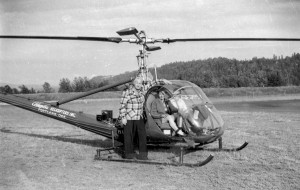
Wes Lematta’s first helicopter, a Hiller 12B, started out as a novelty. On weekends, he sold helicopter rides from his yard to curious people who wanted to try a flight in the strange-looking aircraft.
Later, he used his Hiller to carry a towline between an offshore tugboat and a beached barge. That was the first of many episodes where he was hired to pull vessels off Oregon’s Pacific Ocean beaches. After turning his Hiller 12B into such a workhorse, Lematta invested in a much more powerful E model, with a 345 horsepower engine and dual controls.
The added power enabled him to take advantage of a new opportunity, installing power transmission towers and towing a line for stringing the electric cables between the towers at a new dam in the Columbia River Gorge. Realizing it was easier to watch the placement of his loads when he leaned out of the canopy, he developed a direct visual observation control system that became an industry standard for flying helicopters with long-line loads.
By 1962, Columbia Helicopters had moved to Swan Island in the Columbia River, near downtown Portland, making it the nation’s first heliport within a major city. During that decade, he and his brother Jim developed what is possibly the first use of a firefighting water bucket hanging from a cable under a helicopter—another technique used regularly today. Converted from hauling cement, the original bucket carried 200 gallons.
The Lemettas also invented a “bubble-window,” to protect pilots from the elements when they had to lean out of the canopies in cold weather to watch their undercarriage loads. The inspiration for the idea came when Jim Lematta was flying a tower-setting project in the Colorado Rockies with the company’s Sikorsky 61, the civilian model of the SH-3 Sea King antisubmarine aircraft produced for the U.S. Navy. Leaning out of the helicopter during the tower work, he got so cold he had to land to warm up.
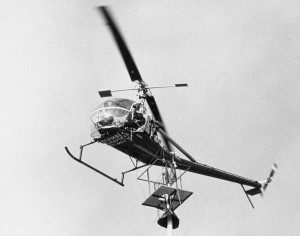
Wes Lematta’s first helicopter, a Hiller 12B, started out as a novelty. On weekends, he sold helicopter rides from his yard to curious people who wanted to try a flight in the strange-looking aircraft.
By 1969, the company’s growth was accelerating. To expand Columbia Helicopters’ capabilities, Lematta bought three Boeing Vertol 107-II tandem-rotor helicopters from Pan Am Airways. The military used the civilian versions in Vietnam; they were used elsewhere as the CH-46 Sea Knight. Lematta called the Vertol helicopters the backbone of his aircraft fleet. Eventually, Columbia became the world’s only commercial operators of those helicopters.
Finding new uses for heavy-lift helicopters became more and more common for the company. In 1971, for the first time, Lematta and Jack Erickson, of Oregon’s Erickson Lumber Co., proved the financial feasibility of helicopters logging large timber. That year, Erickson bought two S-64 Skycranes for heli-logging and transformed his company into Erickson Sky-Crane. Soon, Erickson expanded his aerial logging operations into Canada, Malaysia and Indonesia. Today, Columbia’s technique for selective forest harvesting by helicopter is praised as one of the most environmentally sensitive forms of logging ever developed.
Columbia Helicopters developed another new market in the early 1970s, sending several of its giant helicopters to remote oil fields to move oil rigs during exploration ventures. Soon, oil companies began moving their drilling rigs in even larger sections because of the company’s heavy lifting capacity.
Moving from its Swan Island base to a new, larger facility at the Aurora State Airport in 1976, the company expanded its maintenance facilities and bought four Kawasaki Vertol 107-IIs from the government of Thailand.
“Perhaps the best remembered photo of Columbia’s twin-rotor Vertols in action was the towing of a loaded 220-ton hover barge across broken ice near Alaska’s Prudhoe Bay,” said Dan Sweet, Columbia’s media services manager.
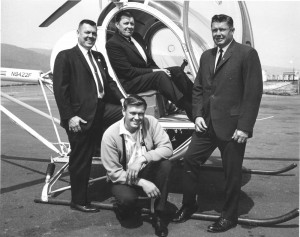
Clockwise from top: Ed, Bill, Jim and Wes Lematta worked to build Columbia Helicopters into the world’s largest operator of heavy-lifting whirlybirds.
When Columbia provided flight crews for Arco-owned Boeing 234 Chinooks in 1983, for work in the Bering Sea, Arco officials were so impressed with the aircraft that the company bought its first two Chinooks the next year.
Expanding its global business even more in 1985, Columbia flew three Vertols to the Sudan to assist with famine relief food missions, moving more than 8 million pounds of food in just 100 days and flying 2,598 hours with 100 percent aircraft availability and mission completion.
The Boeing Vertol 107-IIs and Boeing 234 commercial Chinooks became so important to the company’s operations over the years that in December 2006 Columbia bought the type certificates for those aircraft from Boeing. Now, the company’s seeking a Federal Aviation Administration production certificate for aircraft parts, so Columbia will continue to have repair supplies. Eventually, Columbia expects to receive production certificates for building both types of helicopters, recognizing the company’s future depends greatly on having access to those types of heavy-lift helicopters.
Today, the company owns 14 Boeing Vertols and seven Boeing 234 Chinooks. They’re flown throughout the world, supported by a top-rated maintenance department that has achieved a 97 percent availability rate for Columbia’s global fleet. Its expert maintenance skills have kept some helicopters routinely flying more than 300 hours per month without downtime. Now, the company is stepping up its efforts to market those maintenance skills to the world’s military forces, since many nations fly the same types of heavy-lifting helicopters.
Aerial logging and supporting oil industry operations are still the largest segments of the company’s business, followed by fighting forest fires, construction projects and an occasional flight for movie crews. Columbia’s helicopters have been seen in “Jurassic Park: The Lost World,” “Demolition Man,” “Under Siege,” “Runaway Train,” “King Kong Lives,” “Star Man” and “More American Graffiti,” as well as on television, in The Learning Channel’s “Monster Machines,” local and national news broadcasts in America and on various programs around the world.
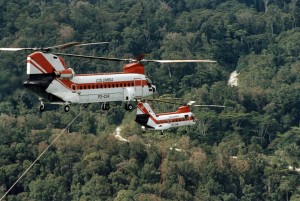
Two of Columbia Helicopters’ models, a Model 234 Chinook, left, and a Vertol 107-II, fly over Papua New Guinea on a petroleum exploration project.
From a one-man, one-helicopter business started five decades ago, Lematta has built Columbia Helicopters into a company with 750 employees worldwide, operating aircraft in the U.S., Peru, Ecuador, New Zealand, Papua New Guinea and Canada.
“I couldn’t have built this company without the assistance of others,” Lematta told the gathering of several hundred employees. “First and foremost, are the members of my family: brothers Bill and Jim, and especially my brother Ed and his wife Vivian. Without their support and work, we never would have succeeded.”
He also thanked his wife, Nancy; his children, Betsy, Marci and Bart; and Jeff and Jill Lematta, who all worked for the company and offered constant support. He offered appreciation to those who had contributed financial and moral support over the years, including Bob Duncan, Wil Josie, Sterling Hanel, Frank Stenzell, Dave West and Gordon Anderson.
“Over the years, we’ve had many employees who helped build the company, including Jack Pyle, Roy Simmons, Mike Fahey and Pete Barendregt, to name just a few,” he said. “However, every single one of you is a reason that our company is so successful today. Your willingness to work under difficult conditions and your dedication to only the highest levels of quality have enabled the company to work anywhere in the world with exceptional results.”
For more information, visit [http://www.colheli.com].











